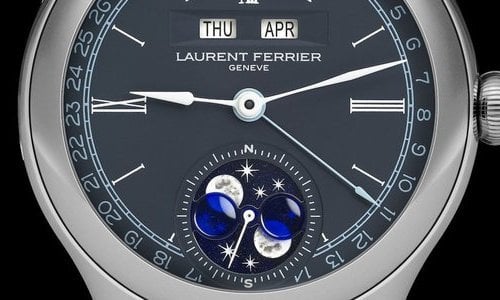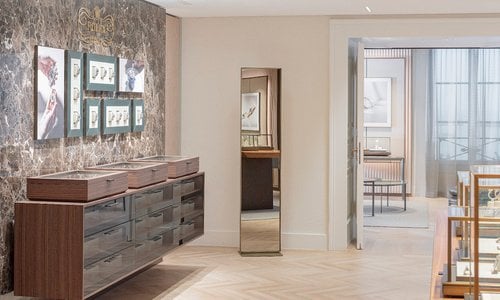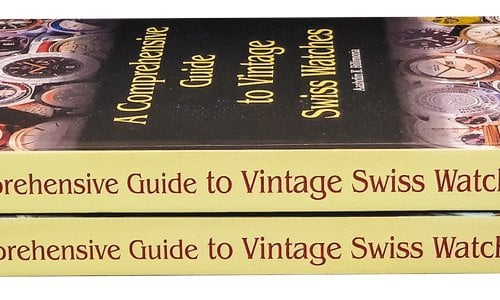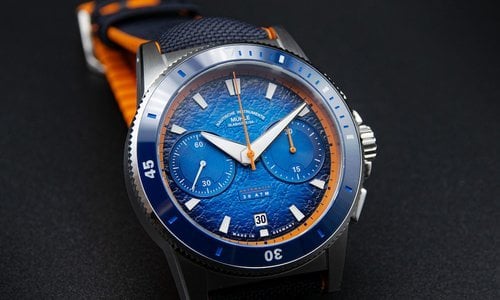In the landscape of independent brands, MB&F—for Max Büsser & Friends—has occupied a very particular niche for the last five years. More than any other watchmaking start-up (a term that Max Büsser will immediately refute), MB&F is setting out on an original path that seeks to give mechanical watchmaking a radically new stylistic dimension.
How could we define it more precisely? From one model to another, each is different and yet each is immediately recognizable from the touch of a certain creative hand. Between the first Horological Machine (the HM1 in the shape of a large eight) and more recently the HM4 Thunderbolt (that takes the form of a stealth bomber), while passing by the HM2 (a large sapphire table) and the HM3 (with its two protuberances that are transformed into the eyes of a frog in the HM3 Frog version) or the jewellery delight of the recent Jwlrymachine created with Boucheron, the forms, functions, appearance and the feeling that emanate from each of these timepieces are each quite particular.
The great strength of these Horological Machines (developed by Max Büsser who, as we recall is the creator of the concept for the Opus series for the Harry Winston Rare Timepieces, which he directed for seven years) is that they totally escape from the contingencies of the dominant trends by proposing ‘bachelor machines’ that are stylistically autonomous, freed from the confines of current aesthetics—
a little like something made by a single artist. The art practiced by Max Büsser, however, is more like that of an orchestra leader.
The other remarkable particularity of Büsser’s global concept is to have excluded, from the beginning, all vague desires for verticalization or for becoming a manufacture. Rather, he chose to work in total transparency with only a large circle of ‘Friends’. These Friends are external creative collaborators and include, among others, the designer Eric Giroud (the loyal first violin) as well as high-level suppliers such as Agenhor and Les Artisans Horlogers, which are the subjects of portraits in the article, Master Mechanics, in this issue. This is another way of demonstrating that he is the ‘son’ of no man but the friend of many—a form of declaration of independence and of difference that is inscribed even in the name of the brand itself.
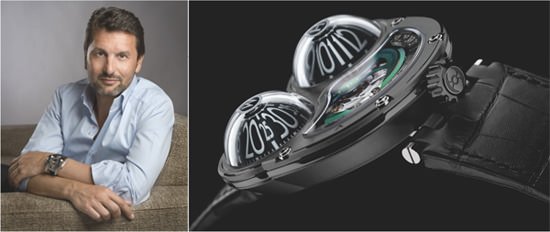 Max Büsser, HM3 FROG
Max Büsser, HM3 FROG
A huge buzz and organized rarity
The third particularity of this veritable concept company is the detailed promotional organ-ization that began with the founding of MB&F five years ago, and also the meticulously organ-ized rarity of its pieces: 145 pieces in 2010 sold through 20 points of sale worldwide, with a 100 per cent sell-out in 2009 (the figures for 2010 were not known at the time of going to press), giving a turnover of around CHF 7 million (for an average sell-in price of CHF 48,000 per watch).
To arrive at this stage, the orchestra leader had to transform himself into a globetrotter. Literally everywhere all the time, he incessantly promoted and advocated for his proper cause. But we must emphasize that he had at his disposal a solid advantage, one that many young brands would correctly envy him for: an address book from his Opus days at Harry Winston that immediately opened many doors that would otherwise have remained tightly shut.
Büsser knew how to skilfully organize a veritable planetary buzz around the introduction of his pieces, a sort of organized suspense for each of the new horological machines. Perfectly mastering the large palette of communication tools at his disposition today—having understood before all the others that, in the competi-tive world of the watch media that had sprouted up all over in electronic or paper form, journalists are ready to sell their soul to get an exclusive or a preview—he was able to create a media coverage that even the very large brands could envy. He thus deliberately targeted a new generation of young and rich Asian aficionados avid for exclusive mechanical ‘follies’ and a new class of collectors desiring avant-garde timekeeping.
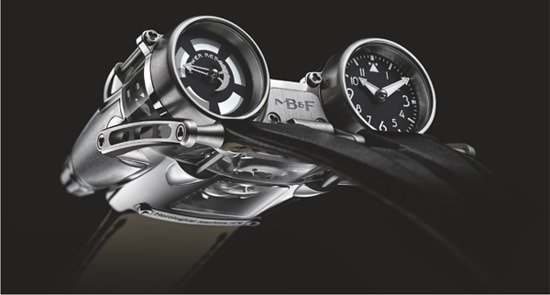 HM4 THUNDERBOLT
HM4 THUNDERBOLT
Promise only what you can deliver
All of this would have been in vain, however, if the product had not been up to the expected standard and if the deliveries had not kept up with the promises. Avoiding pure marketing announcements like the plague, Max Büsser was able to deliver what he said he would. In 2010, he announced, launched and delivered four lines: the HM2 Saphir, the HM3 Frog, the furtive HM4, and the Jwlrymachine made in concert with Boucheron.
But he himself recognizes that in spite of the power of persuasion and the well-organized media ‘machine’, each new launch is a gamble. He is thus confronted with a sensitive challenge since 80 per cent of his turnover this year comes from new pieces. If only one does not meet the approval of the public, his entire structure will be weakened since it is the success of one model that finances the following. And, 2009 has not been a simple year as Büsser himself admits, having had to ‘battle hard’ to produce all of his 145 pieces. In the end, he did succeed and he will certainly succeed this year, while hoping to gradually increase production to 200 pieces per year.
To better distribute his particular approach to timekeeping and qualify it even more, Max Büsser will probably open an art gallery. In his opinion, “showing how we work, how we design and how we create a watch is as important as the piece itself.”
But he also has two or three small secrets. While he sometimes demands the impossible for his watches, such as the HM4’s block of sapphire crystal that takes 150 hours per piece to make and costs CHF 15,000, do you know why none of his watches has a seconds indication? Or why none will ever be delivered with a rubber strap? We cannot tell you because then they would no longer be his little secrets.
Source: Europa Star December - January 2011 Magazine Issue

